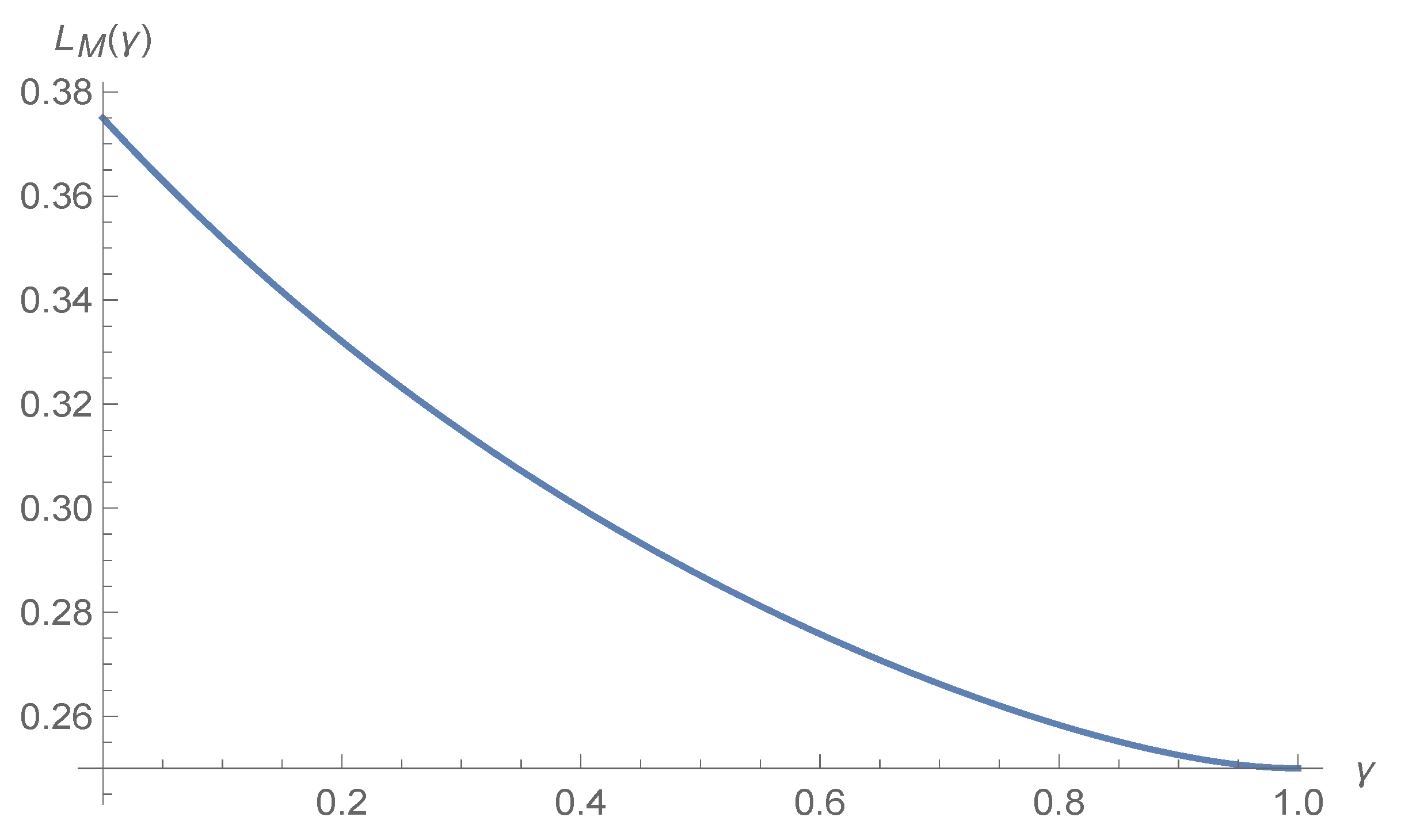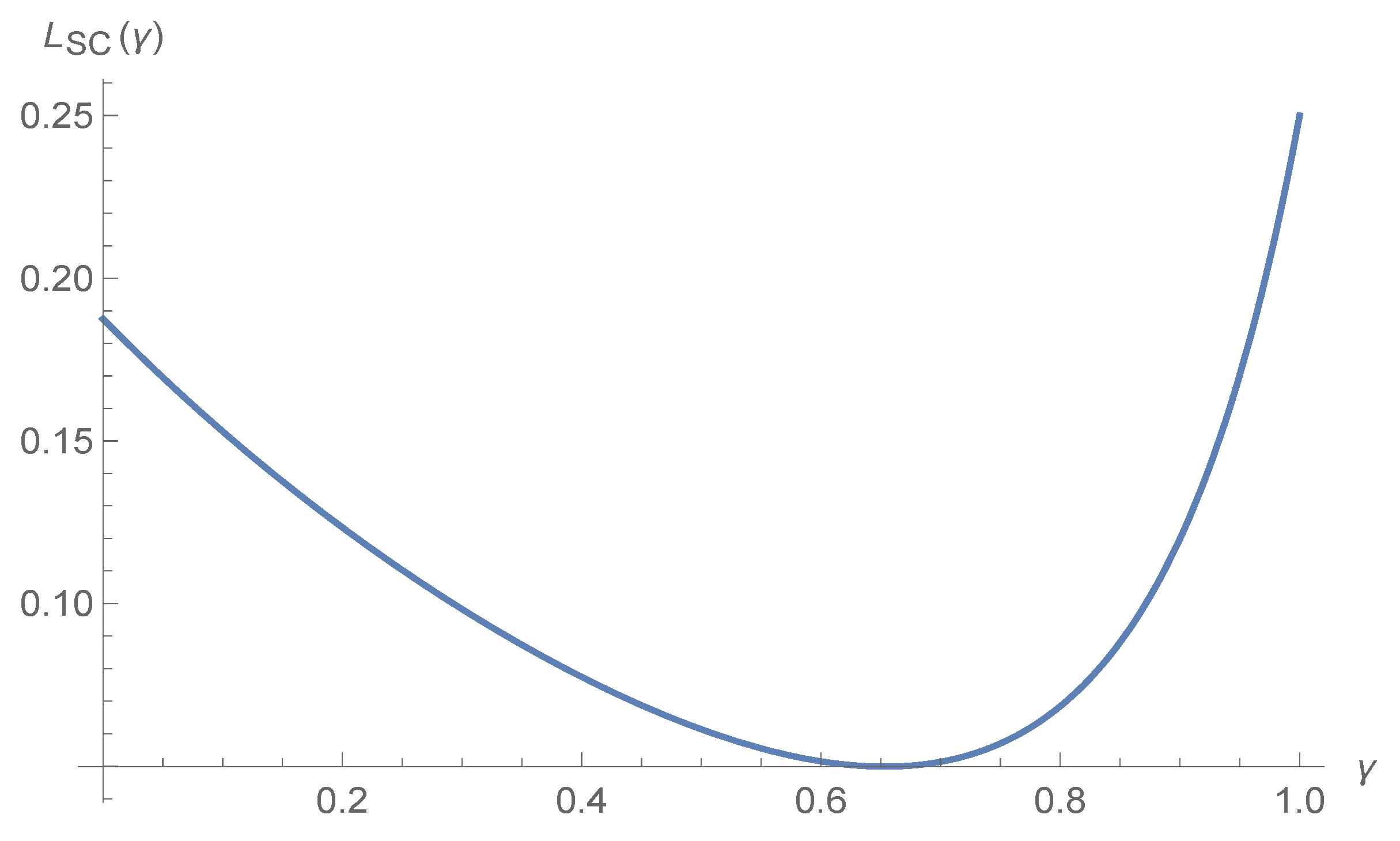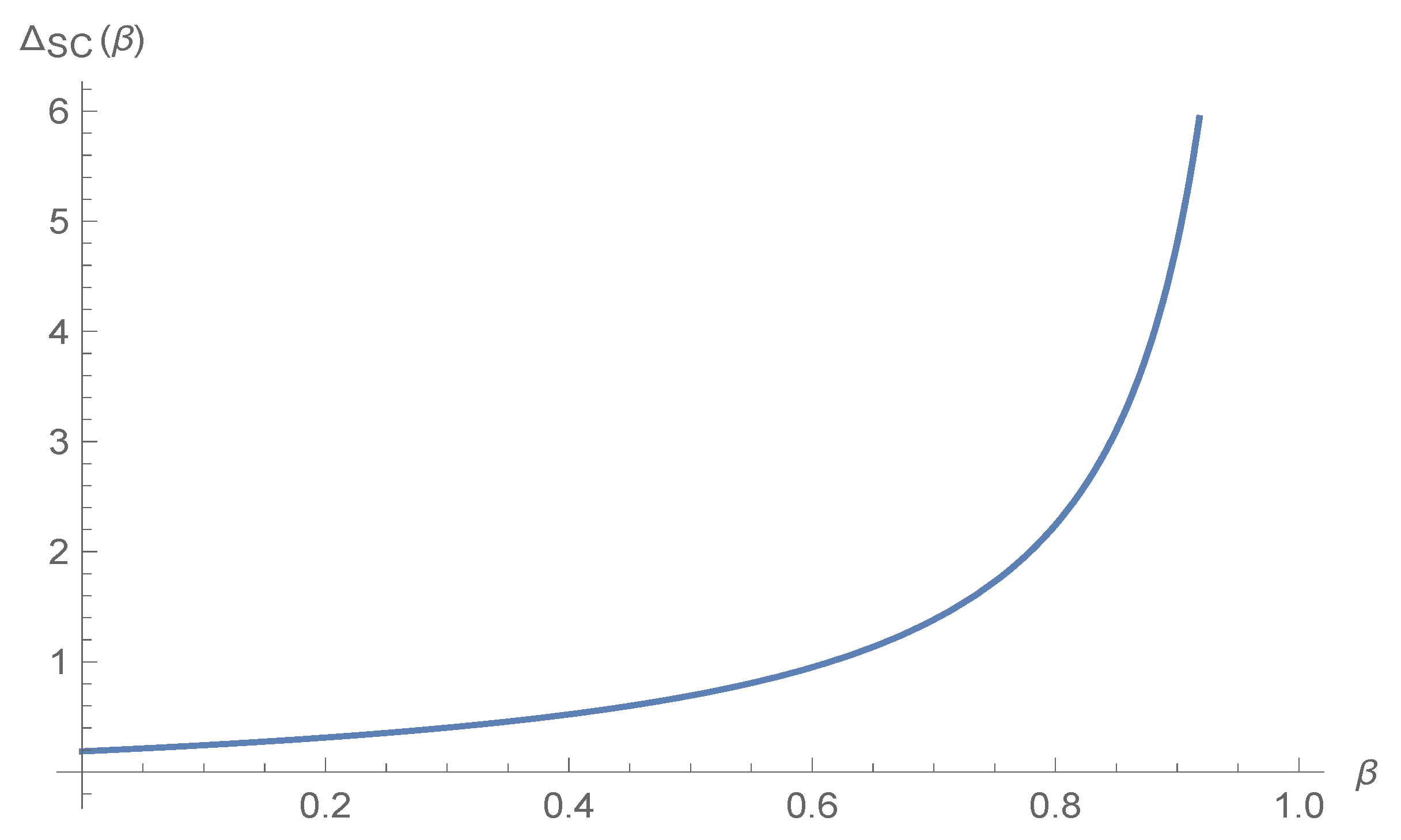Imperfect Demand Information Sharing Under Manufacturer Encroachment
Abstract
1. Introduction
2. Literature Review
3. Model
4. Cournot Competition Under Manufacturer Encroachment
4.1. Cournot Competition: Perfect Quantity Competition
4.1.1. Noncommunicative
4.1.2. Communicative
4.1.3. Comparisons: Noncommunicative vs. Communicative
4.2. Cournot Competition: Differentiated Quantity Competition
4.2.1. Noncommunicative
4.2.2. Communicative
4.2.3. Comparisons: Noncommunicative vs. Communicative
5. Bertrand Competition Under Manufacturer Encroachment
5.1. Noncommunicative
5.2. Communicative
5.3. Comparisons: Noncommunicative vs. Communicative
6. Conclusions
7. Proofs and Statements
7.1. Algebraic Process and Proofs
7.1.1. Algebraic Process in Section 4.1
7.1.2. Proof of the Propositions
7.2. The Reasons for Not Considering Signaling Effects
7.3. The Reasons for Sequential Pricing in Section 5
Author Contributions
Funding
Data Availability Statement
Conflicts of Interest
References
- Arya, A.; Mittendorf, B.; Sappington, D.E.M. The bright side of supplier encroachment. Mark. Sci. 2007, 26, 651–659. [Google Scholar] [CrossRef]
- Emerson, R.W. Franchise encroachment. Am. Bus. Law J. 2010, 47, 191–290. [Google Scholar] [CrossRef]
- Huang, S.; Guan, X.; Chen, Y. Retailer information sharing with supplier encroachment. Prod. Oper. Manag. 2018, 27, 1133–1147. [Google Scholar] [CrossRef]
- Li, Z.; Gilbert, S.; Lai, G. Supplier encroachment under asymmetric information. Manag. Sci. 2014, 60, 449–462. [Google Scholar] [CrossRef]
- Li, Z.; Gilbert, S.M.; Lai, G. Supplier encroachment as an enhancement or a hindrance to nonlinear pricing. Prod. Oper. Manag. 2015, 24, 89–109. [Google Scholar] [CrossRef]
- Chiang, W.Y.K.; Chhajed, D.; Hess, J.D. Direct marketing, indirect profits: A strategic analysis of dual-channel supply-chain design. Manag. Sci. 2003, 49, v-142. [Google Scholar] [CrossRef]
- Kohan, S.E. Nike prices to rise amid supply chain issues while profits increase 23%. Forbes 2021. Available online: https://www.forbes.com/sites/shelleykohan/2021/09/23/nike-prices-to-rise-amid-supply-chain-issues-while-profits-increase-23/?sh=5d3021df47fd (accessed on 30 October 2025).
- Guo, L. The benefits of downstream information acquisition. Mark. Sci. 2009, 28, 457–471. [Google Scholar] [CrossRef]
- Mittendorf, B.; Shin, J.; Yoon, D.H. Manufacturer marketing initiatives and retailer information sharing. Quant. Mark. Econ. 2013, 11, 263–287. [Google Scholar] [CrossRef]
- Li, P.; Castelo, N.; Katona, Z.; Sarvary, M. Frontiers: Determining the validity of large language models for automated perceptual analysis. Mark. Sci. 2024, 43, 254–266. [Google Scholar] [CrossRef]
- Brand, J.; Israeli, A.; Ngwe, D. Using LLMs for market research. Harvard Business School, 2023, Working Paper Number: 23-062. Available online: https://www.hbs.edu/ris/Publication%20Files/23-062_6bfe7a5b-3ed9-4afd-a4c1-c91b60dd82e5.pdf (accessed on 30 October 2025).
- Xu, F.; Wang, X.; Chen, W.; Xie, K. The Economics of AI Foundation Models: Openness, Competition, and Governance. 2024. SSRN:1–31. Available online: https://ssrn.com/abstract=4999355 (accessed on 30 October 2025).
- Lee, H.L.; Whang, S. Information sharing in a supply chain. Int. J. Technol. Manag. 2000, 20, 373–387. [Google Scholar] [CrossRef]
- Li, L.; Zhang, H. Confidentiality and information sharing in supply chain coordination. Manag. Sci. 2008, 54, 1467–1481. [Google Scholar] [CrossRef]
- Shang, W.; Ha, A.Y.; Tong, S. Information sharing in a supply chain with a common retailer. Manag. Sci. 2016, 62, 245–263. [Google Scholar] [CrossRef]
- Ha, A.Y.; Tian, Q.; Tong, S. Information sharing in competing supply chains with production cost reduction. Manuf. Serv. Oper. 2017, 19, 246–262. [Google Scholar] [CrossRef]
- Ha, A.Y.; Tong, S. Contracting and information sharing under supply chain competition. Manag. Sci. 2008, 54, 701–715. [Google Scholar] [CrossRef]
- Ha, A.Y.; Tong, S.; Zhang, H. Sharing demand information in competing supply chains with production diseconomies. Manag. Sci. 2011, 57, 566–581. [Google Scholar] [CrossRef]
- Yoon, D.H. Supplier encroachment and investment spillovers. Prod. Oper. Manag. 2016, 25, 1839–1854. [Google Scholar] [CrossRef]
- Zhao, D.; Li, Z. The impact of manufacturer’s encroachment and nonlinear production cost on retailer’s information sharing decisions. Ann. Oper. Res. 2018, 264, 499–539. [Google Scholar] [CrossRef]
- Cai, K.; He, S.; He, Z. Information sharing under different warranty policies with cost sharing in supply chains. Int. Trans. Oper. Res. 2020, 27, 1550–1572. [Google Scholar] [CrossRef]
- Jain, A.; Sohoni, M. Should firms conceal information when dealing with common suppliers? Nav. Res. Logist. (NRL) 2015, 62, 1–15. [Google Scholar] [CrossRef]
- Li, L. Information sharing in a supply chain with horizontal competition. Manag. Sci. 2002, 48, 1196–1212. [Google Scholar] [CrossRef]
- Zhang, H. Vertical information exchange in a supply chain with duopoly retailers. Prod. Oper. Manag. 2002, 11, 531–546. [Google Scholar] [CrossRef]
- Nair, G.; Pleasance, D. Mitigating channel conflict. McKinsey Q. 2005, 3, 16–17. [Google Scholar]
- Tannenbaum, J. Franchisees Resist Poaching via Software, Kiosks, Internet; Dow Jones Company: New York, NY, USA, 1995. [Google Scholar]
- Tedeschi, B. E-Commerce Report; Traditional Manufacturers Are Grappling with the Pros and Cons of Direct Sales on the Internet. The New York Times, 3 January 2000. [Google Scholar]
- Zhang, S.; Zhang, J.; Zhu, G. Retail service investing: An anti-encroachment strategy in a retailer-led supply chain. Omega 2019, 84, 212–231. [Google Scholar] [CrossRef]
- Cattani, K.; Gilland, W.; Heese, H.S.; Swaminathan, J. Boiling frogs: Pricing strategies for a manufacturer adding a direct channel that competes with the traditional channel. Prod. Oper. Manag. 2006, 15, 40–56. [Google Scholar] [CrossRef]
- Fu, F.; Chen, S.; Yan, W. The implications of supplier encroachment via an online platform. RAIRO-Oper. Res. 2022, 56, 529–564. [Google Scholar] [CrossRef]
- Guan, X.; Liu, B.; Chen, Y.J.; Wang, H. Inducing supply chain transparency through supplier encroachment. Prod. Oper. Manag. 2020, 29, 725–749. [Google Scholar] [CrossRef]
- Ha, A.Y.; Tong, S.; Wang, Y. Channel structures of online retail platforms. Manuf. Serv. Oper. Manag. 2022, 24, 1547–1561. [Google Scholar] [CrossRef]
- Hotkar, P.; Gilbert, S.M. Supplier encroachment in a nonexclusive reselling channel. Manag. Sci. 2021, 67, 5821–5837. [Google Scholar] [CrossRef]
- Hsieh, C.C.; Putera, R.R. Product rollover and direct sales decisions in dual-channel supply chains. RAIRO-Oper. Res. 2022, 56, 2203–2220. [Google Scholar] [CrossRef]
- Jiang, J.; He, C. Low-price guarantees in a dual channel of distribution. Mark. Sci. 2021, 40, 765–782. [Google Scholar] [CrossRef]
- Liu, B.; Guan, X.; Wang, Y. Supplier encroachment with multiple retailers. Prod. Oper. Manag. 2021, 30, 3523–3539. [Google Scholar] [CrossRef]
- Liu, J.; Wu, X.; Yang, B.; Yang, S. Suppliers’ online channel structure strategies under product innovation effect and spillover effect. RAIRO-Oper. Res. 2022, 56, 3341–3365. [Google Scholar] [CrossRef]
- Pei, Y.; Li, M. Manufacturer encroachment and promotional effort on a hybrid online retailing platform. RAIRO-Oper. Res. 2025, 59, 2003–2030. [Google Scholar] [CrossRef]
- Shi, S.; Wang, C.; Cheng, T.E.; Liu, S. Manufacturer encroachment with an e-commerce division. Prod. Oper. Manag. 2023, 32, 2002–2019. [Google Scholar] [CrossRef]
- Tsay, A.A.; Agrawal, N. Channel conflict and coordination in the e-commerce age. Prod. Oper. Manag. 2004, 13, 93–110. [Google Scholar] [CrossRef]
- Zheng, B.; Yu, N.; Jin, L.; Xia, H. Effects of power structure on manufacturer encroachment in a closed-loop supply chain. Comput. Ind. 2019, 137, 106062. [Google Scholar] [CrossRef]
- Li, T.; Xie, J.; Zhao, X.; Tang, J. On supplier encroachment with retailer’s fairness concerns. Comput. Ind. Eng. 2016, 98, 99–512. [Google Scholar] [CrossRef]
- Xue, M.; Zhang, J. Supply chain encroachment with quality decision and different power structures. RAIRO-Oper. Res. 2020, 54, 693–718. [Google Scholar] [CrossRef]
- Zhang, L.H.; Tian, L.; Chang, L.Y. Equilibrium strategies of channel structure and rfid technology deployment in a supply chain with manufacturer encroachment. Int. J. Prod. Res. 2021, 60, 1890–1912. [Google Scholar] [CrossRef]
- Li, Y.; Ma, J.; Liu, Y. Study on the complexity of channel pricing game in showrooming o2o supply chain. RAIRO-Oper. Res. 2022, 56, 3373–3392. [Google Scholar] [CrossRef]
- Qi, L.; Song, H.; Xiao, W. Coopetition in platform-based retailing: On the platform’s entry. Manag. Sci. 2024, 71, 3641–4531. [Google Scholar] [CrossRef]
- Li, H.; Lu, J.; Yan, N.; Lai, K.K. Manufacturer encroachment with consumer digital privacy in dual-channel supply chains. Int. J. Ind. Eng. Comput. 2025, 16, 825–846. [Google Scholar] [CrossRef]
- Zhang, J.; Li, S.; Zhang, S.; Dai, R. Manufacturer encroachment with quality decision under asymmetric demand information. Eur. Oper. Res. 2019, 273, 217–236. [Google Scholar] [CrossRef]
- Hao, Z.; Jiang, L. Direct selling by suppliers improves system-wide information flow. Oper. Res. Lett. 2019, 47, 305–310. [Google Scholar] [CrossRef]
- Wang, J.; Zhuo, W. Strategic information sharing in a supply chain under potential supplier encroachment. Comput. Ind. Eng. 2020, 150, 106880. [Google Scholar] [CrossRef]
- Sun, X.; Tang, W.; Chen, J.; Li, S.; Zhang, J. Manufacturer encroachment with production cost reduction under asymmetric information. Transp. Part E Logist. Transp. Rev. 2019, 128, 191–211. [Google Scholar] [CrossRef]
- Sun, X.; Tang, W.; Zhang, J.; Chen, J. The impact of quantity-based cost decline on supplier encroachment. Transp. Res. Part E Logist. Transp. Rev. 2021, 147, 102245. [Google Scholar] [CrossRef]
- Huang, S.; Chen, S.; Guan, X. Retailer information sharing under endogenous channel structure with investment spillovers. Comput. Ind. 2020, 142, 106346.1–106346.16. [Google Scholar] [CrossRef]
- Zhang, Q.; Tang, W.; Zaccour, G.; Zhang, J. Should a manufacturer give up pricing power in a vertical information-sharing channel? Eur. J. Oper. Res. 2019, 276, 910–928. [Google Scholar] [CrossRef]
- Yan, Y.; Hou, F.; Zhang, H. Demand forecast information sharing with manufacturer encroachment. RAIRO-Oper. Res. 2024, 58, 2421–2443. [Google Scholar] [CrossRef]
- Hou, R.; Li, W.; Lin, X.; Zhao, Y. Impact of quality decisions on information sharing with supplier encroachment. RAIRO-Oper. Res. 2022, 56, 145–164. [Google Scholar] [CrossRef]
- Qi, Y.; Ye, T.; Zhang, G. Manufacturer encroachment and extended warranty provision. RAIRO-Oper. Res. 2024, 58, 4717–4740. [Google Scholar] [CrossRef]
- Ha, A.Y.; Luo, H.; Shang, W. Supplier encroachment, information sharing, and channel structure in online retail platforms. Prod. Oper. Manag. 2022, 31, 1235–1251. [Google Scholar] [CrossRef]
- Li, G.; Tian, L.; Zheng, H. Information sharing in an online marketplace with co-opetitive sellers. Prod. Oper. Manag. 2021, 30, 3713–3734. [Google Scholar] [CrossRef]
- Guan, H.; Yang, Z.; Gurnani, H. Value of information with manufacturer encroachment. Prod. Oper. Manag. 2023, 32, 780–793. [Google Scholar] [CrossRef]
- Li, Z.; Wang, B. Retailer information sharing under manufacturer encroachment and production cost reduction. Manag. Decis. 2025, 46, 602–626. [Google Scholar] [CrossRef]
- Hu, X.; Guan, Z.; Ren, J. The retailer’s information sharing decisions with manufacturer’s encroachment and production learning effects. RAIRO-Oper. Res. 2025, 59, 771–802. [Google Scholar] [CrossRef]
- Li, L.; Zhang, H. Supply chain information sharing in a competitive environment. In Supply Chain Structures: Coordination, Information and Optimization; Song, J.S., Yao, D.D., Eds.; Kluwer Academic Publishers: Norwell, MA, USA, 2002; pp. 161–206. [Google Scholar]
- Li, L. Cournot oligopoly with information sharing. Rand J. Econ. 1985, 16, 521–536. [Google Scholar] [CrossRef]
- Ericson, W.A. A note on the posterior mean of a population mean. J. R. Stat. Soc. Ser. B (Methodol.) 1969, 31, 332–334. [Google Scholar] [CrossRef]
- Gal-Or, E. First mover advantages with private information. Rev. Econ. Stud. 1987, 54, 279–292. [Google Scholar] [CrossRef]





| Scenarios | Perfect Quantity Competition | Differentiated Quantity Competition | Differentiated Price Competition |
|---|---|---|---|
| Manufacturer encroachment |
| Notation | Explanation |
|---|---|
| p | Price that clears the market |
| a | A positive constant representing the base part of market potential |
| A random variable representing the uncertain part of market potential | |
| Order quantity of retailer channel in quantity (Cournot) competition | |
| Sales quantity of encroaching manufacturer’s direct channel in quantity (Cournot) competition | |
| The retailer’s sales price in price competition | |
| The manufacturer’s sales price in direct channel in price competition | |
| w | The manufacturer’s wholesale price |
| competition intensity or degree of substitution between the retailer and the encroaching manufacturer in quantity competition, | |
| competition intensity or degree of substitution between the retailer and the encroaching manufacturer in price competition, | |
| m | Unit sales cost for the manufacturer direct channel, |
| Y | Demand signal for retailer concerning the market demand |
| t | Accuracy of demand signal, where |
| i | The index that represents the encroaching manufacturer or retailer, R is for retailer, M is for the encroaching manufacturer |
| I | The index that represents information sharing decisions, N means no communication, S means communication |
| the subscript representing both the supply chain partner and information sharing decisions | |
| the superscript representing the homogeneous quantity competition scenario | |
| the superscript representing the differentiated quantity competition scenario | |
| the superscript representing the differentiated price competition scenario | |
| the superscript representing competition types, where or | |
| Optimal profit for firm or in the corresponding scenario | |
| Optimal order or sales quantity for firm or in the corresponding scenario | |
| Optimal sales price for firm or in the corresponding scenario | |
| Optimal wholesale price for the encroaching manufacturer in the corresponding scenario |
Disclaimer/Publisher’s Note: The statements, opinions and data contained in all publications are solely those of the individual author(s) and contributor(s) and not of MDPI and/or the editor(s). MDPI and/or the editor(s) disclaim responsibility for any injury to people or property resulting from any ideas, methods, instructions or products referred to in the content. |
© 2025 by the authors. Licensee MDPI, Basel, Switzerland. This article is an open access article distributed under the terms and conditions of the Creative Commons Attribution (CC BY) license (https://creativecommons.org/licenses/by/4.0/).
Share and Cite
Wang, B.; Li, Z. Imperfect Demand Information Sharing Under Manufacturer Encroachment. Systems 2025, 13, 1060. https://doi.org/10.3390/systems13121060
Wang B, Li Z. Imperfect Demand Information Sharing Under Manufacturer Encroachment. Systems. 2025; 13(12):1060. https://doi.org/10.3390/systems13121060
Chicago/Turabian StyleWang, Beifen, and Zhibao Li. 2025. "Imperfect Demand Information Sharing Under Manufacturer Encroachment" Systems 13, no. 12: 1060. https://doi.org/10.3390/systems13121060
APA StyleWang, B., & Li, Z. (2025). Imperfect Demand Information Sharing Under Manufacturer Encroachment. Systems, 13(12), 1060. https://doi.org/10.3390/systems13121060






